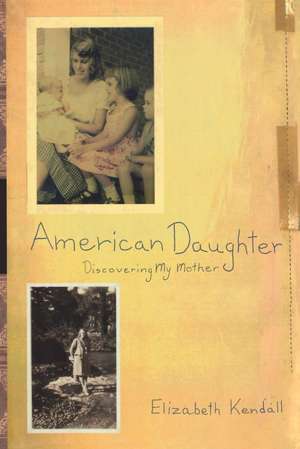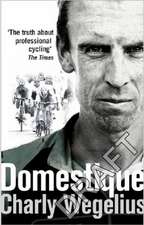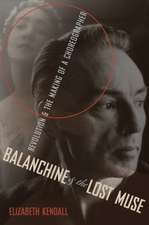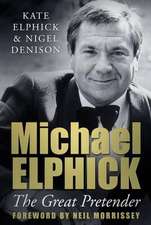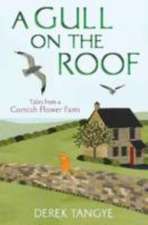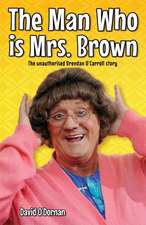American Daughter: Discovering My Mother
Autor Elizabeth Kendallen Limba Engleză Paperback – 30 apr 2000
Occupying a coveted place in St. Louis's privileged high society, Henry and Betty Kendall seemed to be the American dream come true: six children, a sprawling house, a legacy of higher education at Harvard and Vassar. Yet underneath lay the flawed marriage of an idealistic young woman who made her eldest daughter her best friend and turned civil rights into her salvation. Elizabeth maintained the family silence as eccentricities began to appear in her father's behavior, along with whispers of financial difficulties. She accompanied her mother back to Vassar for a summer program on the home and family, then came into her own, away from her family, at the haven of a girls' summer camp and at Radcliffe. From the war-torn 1940s, when young men in uniform, home on leave, went to debutante parties, through the seismic social changes of the 1960s, Kendall tells the intertwined story of her mother and herself, of their powerful bond and how both shaped their lives in response to it.
Unrelentingly honest, rich with humor and insights into families and women's lives, American Daughter is both a poignant portrait of American life at the middle of the twentieth century, and a dual coming-of-age story of a mother and a daughter, united by commitment and love, separated by a fatal accident-and by the vastly different birthrights of their generations.
From the Hardcover edition.
Preț: 93.63 lei
Nou
Puncte Express: 140
Preț estimativ în valută:
17.92€ • 18.76$ • 14.86£
17.92€ • 18.76$ • 14.86£
Carte disponibilă
Livrare economică 19 martie-02 aprilie
Preluare comenzi: 021 569.72.76
Specificații
ISBN-13: 9780812992106
ISBN-10: 0812992105
Pagini: 260
Dimensiuni: 161 x 229 x 17 mm
Greutate: 0.39 kg
Editura: Random House (NY)
ISBN-10: 0812992105
Pagini: 260
Dimensiuni: 161 x 229 x 17 mm
Greutate: 0.39 kg
Editura: Random House (NY)
Notă biografică
A dance critic and historian, Elizabeth Kendall is the author of Where She Danced: The Birth of American Art-Dance and The Runaway Bride: Holly-wood Romantic Comedy of the 1930s. She lives in New York City.
From the Hardcover edition.
From the Hardcover edition.
Extras
LONE BLUE CAR WITH SUITCASES STRAPPED ON top is heading south on Highway 61, the two-lane highway that cuts north and south through the low, flat fields of southern Missouri. It is raining and the sky is dark gray. Seen from above, the road is shiny as a canal; the car seems to be skating straight down it. A gas station with a turquoise canopy comes into view on the opposite side of the road. The car slows, crosses the highway, and pulls in by the gas pumps. The right passenger door opens. A young woman gets out and lifts her face to the rain as the attendant puts the gas nozzle into the car's tank. The woman jumps up and down in place. The attendant removes the nozzle and replaces it in the gas pump. The young woman circles around the car's front and gets in on the driver's side. The car heads off again, picking up speed down the slick highway.
At the bottom of the picture, the glimmer of a creek appears at right angles to the highway, flowing under a low bridge, and beyond that comes a big gray hauling truck, heading up the road on the other side, toward the blue car. The truck crosses the creek, passes the little car in a spume of water, then roars up out of the picture. The blue car, as if shaken, whips back and forth on the road, then plunges into the low wall of the bridge. The car cats up the wall; they become one mangled shape. The suitcases slide off the car roof into the creek. Silence. Stillness. Rain in a flat landscape.
A back door of the crushed car inches open. A grown boy edges out of it, stumbles to the side of the road and waves his arms. A dark green car appears down the road and pulls over; its driver gets out and confers with the boy. From the other back door of the wrecked blue car a blond girl emerges, then two more boys, one grown, one small. Finally the young woman edges from the driver's door. The children lean against the blue car, or take small steps by the side of the road as more passing cars pull over and stop. People get out, surround the children, cluster around the blue car, peer into its open doors.
A police car comes from the bottom of the picture, flashing blue lights, and pulls up next to the other cars, followed by a long black van sounding a siren. From the black van, attendants run with a stretcher to the blue car. They bend into the front passenger seat. People from the other cars usher the children over to the black van and help them through its side doors. At the blue car, the attendants lift from the passenger seat the inert form of a woman, put her on the stretcher, and load her into the black van. The van, with siren sounding, sweeps out across the road and beads back the way the blue car was going. The leftover people swirl about the scene for a few minutes; then they get into their cars and drive away.
THIS ACCIDENT HAPPENED in 1969, on April 3, at about 10:30 in the morning. I was the person in the driver's seat. The children were my brothers and sisters. My mother was the dead woman they pulled from the passenger seat.
I know now that such an event comes without warning. It is not caused by anything except the rain, the truck's splash, the jam of brakes, the panic of the blinded driver-me-on the flooded road. It isn't the result of emotions that have been building in a family, or in a person.
Except that, when people tell themselves their own stories, they usually arrange the telling so that things lead into other things. The very practice of laying down facts, of choosing to put certain events next to others, implies a sequence of cause and effect. Sequences of cause and effect are almost impossible to rub out from any narrative.
Here were a young mother and a nearly grown daughter-I was the oldest of my mother's six children. She and I were assumed by almost everyone to be alike. We often switched places in the same task, the way we traded off the driving that day. We confused each other about where one of us started and the other ended.
What does it mean, looking back at the shapes of both our lives, that one of us caused the other's death? Given the conditions of that road, which had seen many accidents and was later rerouted, it could have been she who was driving, and I who died, though she might not have been driving as fast as I was. I can't imagine how she would have lived after that. But I am the one left alive.
I don't believe in special fates or appointed lifetimes; a skeptical nature was implanted in me at birth. But if I tell the story, there have to be sequences, buildups of meaning, an unfolding design. A few years ago, when I was in my mid-forties, the confluence of an anguished love affair and the undeniable fact of aging signaled that now was the moment to go back and find the design of events that had led, however blindly, to that fatal moment of violence on a Missouri road. I took out my mother's diaries, her calendars, her notes on her projects. I began calling up my father, my brothers and sisters and aunts, and my mother's friends-the different friends from the different parts of her life-and my own friends from childhood. The past, that many-layered existence of the family that was smashed in a moment, started to rise up and show its buried face. And the guilt that had lived underground in me, holding deep parts of me in the grip of numbness, began to loosen and give way in the light of remembering.
Demeter, the Greek goddess of grain, lost her beloved daughter, Persephone, down a crack in the earth that led to the underworld. That myth has always seemed miraculous to me because of the passion it describes between a mother and a daughter. That passion has been a real and abiding force in my life, both before my mother's death and after it.
Of course my story has the wrong person dying. But the effect of the grief is the same. Bereft, Demeter wandered the earth until she found that place again where Persephone had disappeared, and she could pick up her trail.
From the Hardcover edition.
At the bottom of the picture, the glimmer of a creek appears at right angles to the highway, flowing under a low bridge, and beyond that comes a big gray hauling truck, heading up the road on the other side, toward the blue car. The truck crosses the creek, passes the little car in a spume of water, then roars up out of the picture. The blue car, as if shaken, whips back and forth on the road, then plunges into the low wall of the bridge. The car cats up the wall; they become one mangled shape. The suitcases slide off the car roof into the creek. Silence. Stillness. Rain in a flat landscape.
A back door of the crushed car inches open. A grown boy edges out of it, stumbles to the side of the road and waves his arms. A dark green car appears down the road and pulls over; its driver gets out and confers with the boy. From the other back door of the wrecked blue car a blond girl emerges, then two more boys, one grown, one small. Finally the young woman edges from the driver's door. The children lean against the blue car, or take small steps by the side of the road as more passing cars pull over and stop. People get out, surround the children, cluster around the blue car, peer into its open doors.
A police car comes from the bottom of the picture, flashing blue lights, and pulls up next to the other cars, followed by a long black van sounding a siren. From the black van, attendants run with a stretcher to the blue car. They bend into the front passenger seat. People from the other cars usher the children over to the black van and help them through its side doors. At the blue car, the attendants lift from the passenger seat the inert form of a woman, put her on the stretcher, and load her into the black van. The van, with siren sounding, sweeps out across the road and beads back the way the blue car was going. The leftover people swirl about the scene for a few minutes; then they get into their cars and drive away.
THIS ACCIDENT HAPPENED in 1969, on April 3, at about 10:30 in the morning. I was the person in the driver's seat. The children were my brothers and sisters. My mother was the dead woman they pulled from the passenger seat.
I know now that such an event comes without warning. It is not caused by anything except the rain, the truck's splash, the jam of brakes, the panic of the blinded driver-me-on the flooded road. It isn't the result of emotions that have been building in a family, or in a person.
Except that, when people tell themselves their own stories, they usually arrange the telling so that things lead into other things. The very practice of laying down facts, of choosing to put certain events next to others, implies a sequence of cause and effect. Sequences of cause and effect are almost impossible to rub out from any narrative.
Here were a young mother and a nearly grown daughter-I was the oldest of my mother's six children. She and I were assumed by almost everyone to be alike. We often switched places in the same task, the way we traded off the driving that day. We confused each other about where one of us started and the other ended.
What does it mean, looking back at the shapes of both our lives, that one of us caused the other's death? Given the conditions of that road, which had seen many accidents and was later rerouted, it could have been she who was driving, and I who died, though she might not have been driving as fast as I was. I can't imagine how she would have lived after that. But I am the one left alive.
I don't believe in special fates or appointed lifetimes; a skeptical nature was implanted in me at birth. But if I tell the story, there have to be sequences, buildups of meaning, an unfolding design. A few years ago, when I was in my mid-forties, the confluence of an anguished love affair and the undeniable fact of aging signaled that now was the moment to go back and find the design of events that had led, however blindly, to that fatal moment of violence on a Missouri road. I took out my mother's diaries, her calendars, her notes on her projects. I began calling up my father, my brothers and sisters and aunts, and my mother's friends-the different friends from the different parts of her life-and my own friends from childhood. The past, that many-layered existence of the family that was smashed in a moment, started to rise up and show its buried face. And the guilt that had lived underground in me, holding deep parts of me in the grip of numbness, began to loosen and give way in the light of remembering.
Demeter, the Greek goddess of grain, lost her beloved daughter, Persephone, down a crack in the earth that led to the underworld. That myth has always seemed miraculous to me because of the passion it describes between a mother and a daughter. That passion has been a real and abiding force in my life, both before my mother's death and after it.
Of course my story has the wrong person dying. But the effect of the grief is the same. Bereft, Demeter wandered the earth until she found that place again where Persephone had disappeared, and she could pick up her trail.
From the Hardcover edition.
Recenzii
"A miracle of a memoir--lucid, elegant, sensuous, funny, acute. American Daughter
deserves to become an American classic."
---Phillip Lopate
From the Hardcover edition.
deserves to become an American classic."
---Phillip Lopate
From the Hardcover edition.
